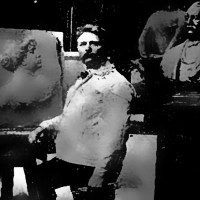News
Creating History
- Details
- Published on Tuesday, 01 May 2012 14:42
- Written by Dr. Peter J. Couri
What's the Story Behind Peoria's Most Beautiful 113-year-old Woman?
Her name is "History" and she has graced the grounds of the Peoria County courthouse since 1899. In 1894, the Peoria Ladies Memorial Day Association contacted sculptor Frederick Triebel, a Peoria native who had his studios in Rome at the time, to design a fitting tribute to Peoria's Civil War heroes.
He sculpted and cast in bronze two groups of six figures in various stages of battle. But on the third side of the monument, he designed "History," the strong heroic woman, symbol of new life and civil grace. The inscription on the monument reads
"We write on page of granite what they wrought on field of battle."
But the sculpture had a very personal meaning for Triebel, as his wife Santina posed for the artwork.
In 1882, Triebel attended the Royal Academy of Fine Arts in Florence, Italy, where he received many honors and had great artistic success. At a party, he noticed the graceful hands of an Italian girl, Santina Grosse, and Frederick asked if he could sculpt them.
They were married in 1889. Relatives described them as passionately in love throughout their entire marriage.
When Triebel received the Peoria Civil War Monument commission in 1894, Santina posed in long brocaded drapes, breasts exposed. Triebel captures the power and strength of life-giving womanhood with the exquisite beauty traced back to Greek classic art. She was the mother of three small children at the time and Triebel's love for her is apparent.
When President William McKinley arrived in Peoria in October 1899 to dedicate the monument, Santina and the children sat on the dais with him, distinguished and proud, holding garlands of flowers, so far from the poverty of Italy.
Santina is important to American history because when she and Frederick moved from Rome to New York in 1899, they discovered a stable in MacDougal Alley, south of West Eighth Street closed off by Fifth Avenue. They felt it would make a perfect artist's studio. The neighborhood was Italian at the time and Santina felt comfortable there raising her three children with another on the way.
By 1901, they had converted six more horse and carriage stables into artist's studios. The community was called New York's Greenwich Village and Frederick and Santina are credited with being the founders of the large artist community in the village.
Santina died in 1935. Frederick passed in 1944. They are buried with their three sons in New York's Woodlawn Cemetery. But Santina will live in the Peoria Courthouse Plaza, sharing her Italian beauty and a mother's strength forever.





















































